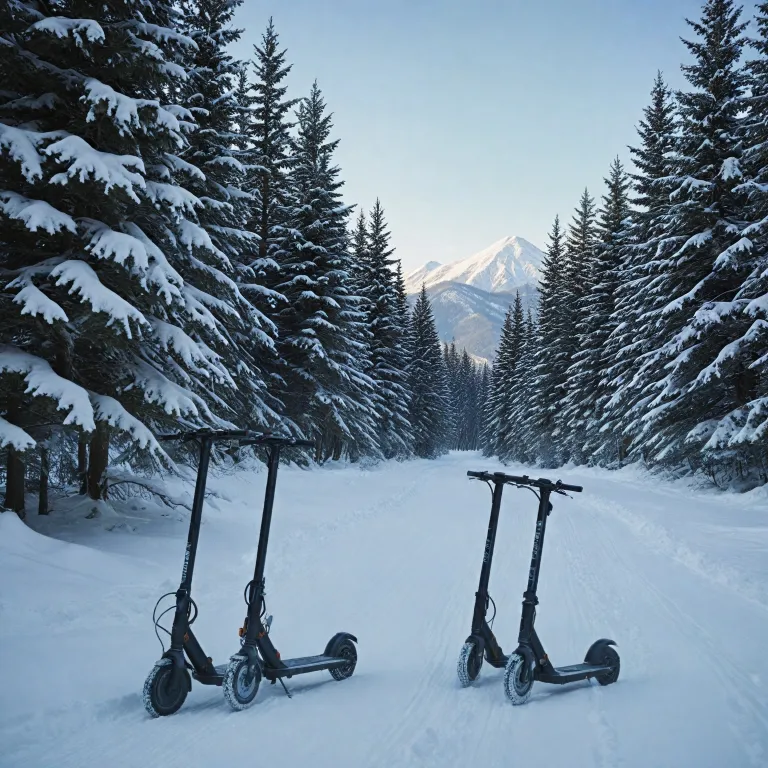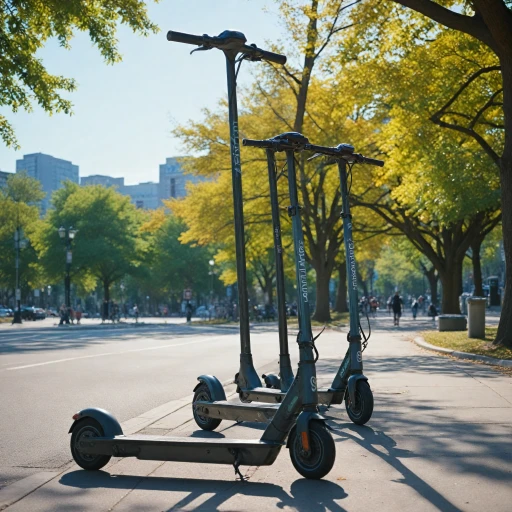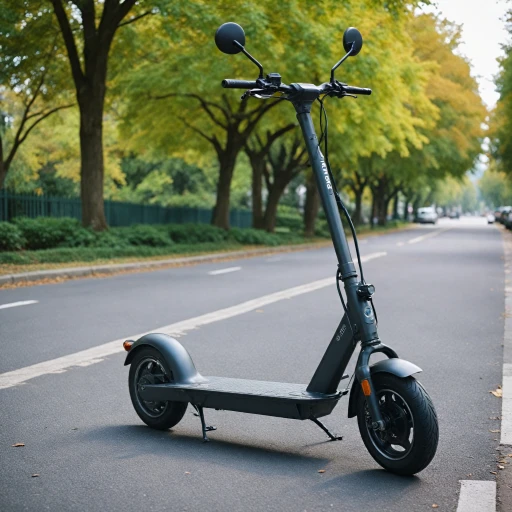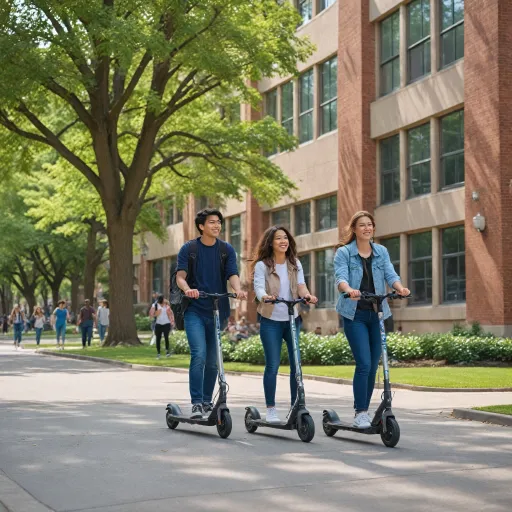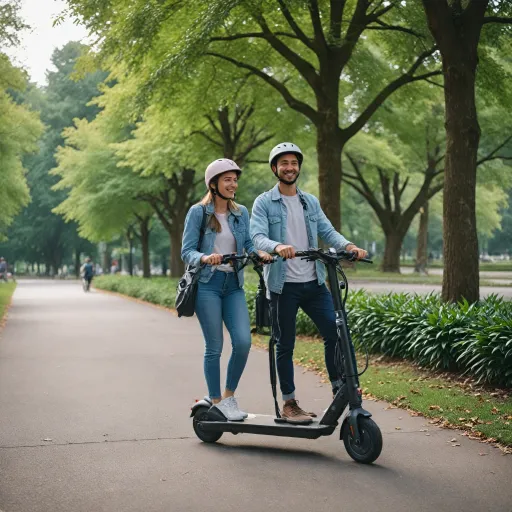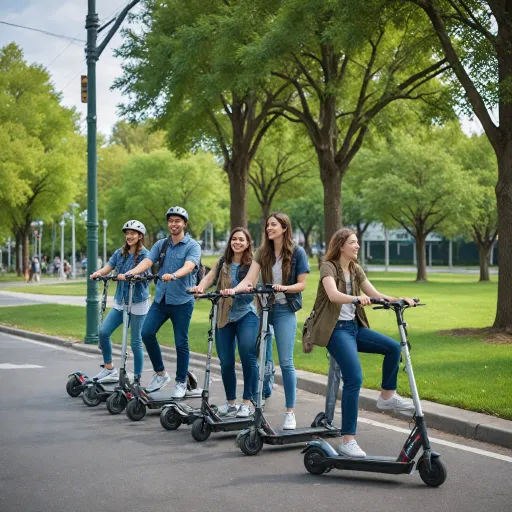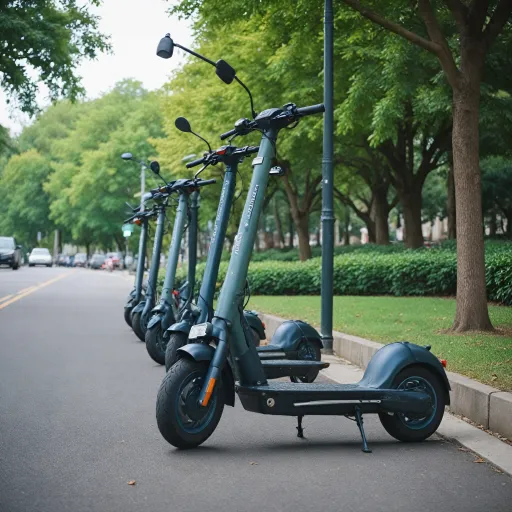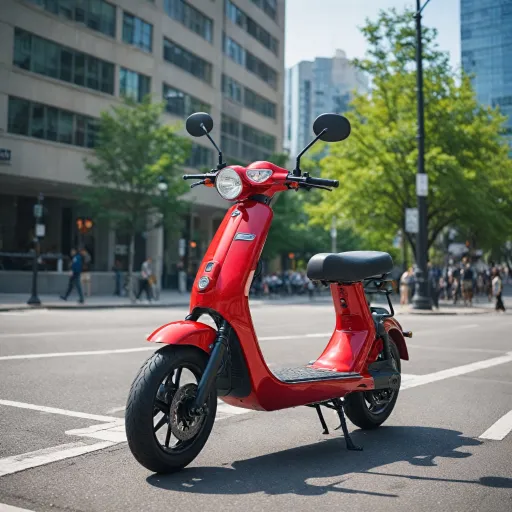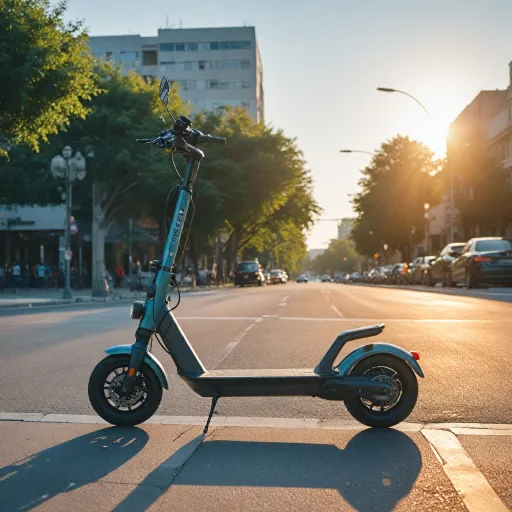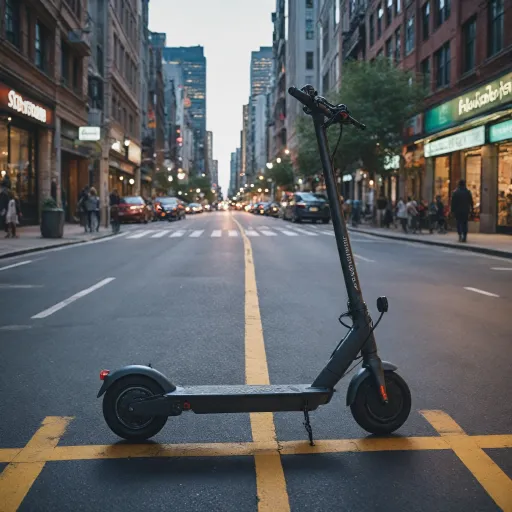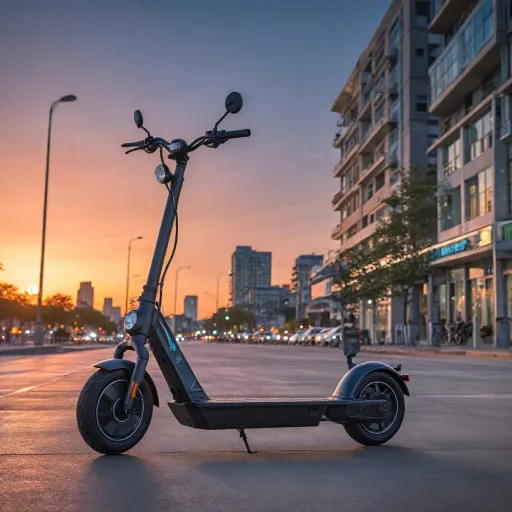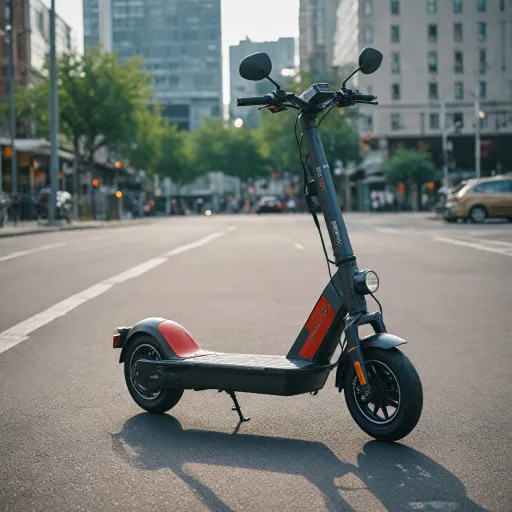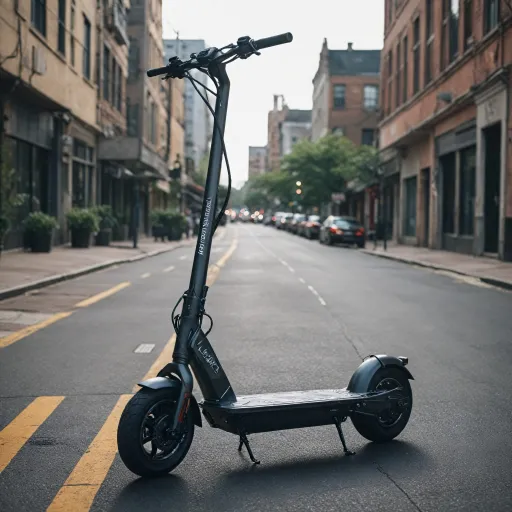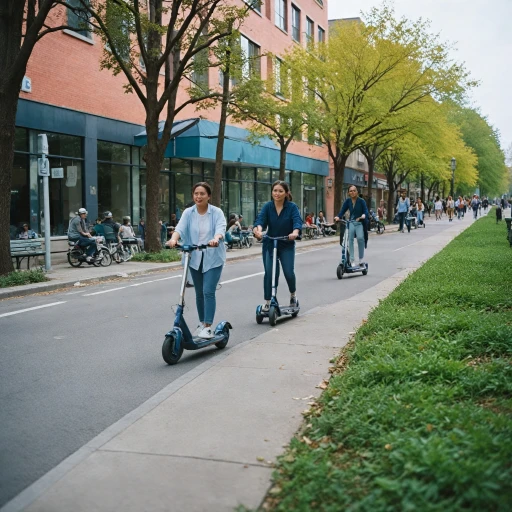
Understanding the Challenges of Riding E-Scooters in Snow
Riding Electric Scooters in Challenging Weather Conditions
Navigating through snow and icy paths can transform your usual electric scooter ride into a challenging winter adventure. Understanding these challenges is crucial to ensure a safe and enjoyable riding experience in snowy weather. A major concern when facing winter conditions is traction. Snow and ice create slippery surfaces that demand better traction from your electric scooter. Pneumatic tires are generally preferred in such conditions, as they can grip the ground more effectively. Additionally, ensuring the tires have deep treads is essential for maintaining control. Cold weather impacts more than just the road beneath you; it can also affect the performance of your scooter's battery. Low temperatures can drain battery life quicker than usual, potentially leaving you short on power during your ride. To mitigate this issue, it is advisable to keep your scooter stored in a warmer environment when not in use and plan your trips with a fully charged battery. Braking also becomes a focal point in snowy weather. Disc brakes are often considered the best option under these conditions, as they provide the superior stopping power needed on slippery surfaces. Winter riding necessitates a different riding style, adapting to rain and snow scenarios. Extra caution is required, with slower speeds to match weather conditions and anticipation of potential obstacles such as hidden ice patches. For individuals committed to tackling the challenges of scooter snow, exploring options like fat tire electric dirt bikes can offer models specifically designed for improved traction and stability in winter conditions.Essential Features for Snow-Ready E-Scooters
What to Look for in a Winter-Savvy E-Scooter
When venturing out on icy pavements and snow-laden paths, e-scooter riders must select models equipped with features tailored for winter riding. These elements ensure not only safety but also a seamless and enjoyable riding experience even when the mercury drops.- Pneumatic Tires for Better Traction: Pneumatic tires provide traction on challenging terrain, including snow and ice. They work by distributing the scooter's weight more evenly and gripping the uneven surface, reducing slips and falls. This feature is vital for maintaining stability in snowy conditions. For a deeper dive into why all-terrain designs can enhance your ride, exploring the world of all-terrain motorized scooters might offer added insights.
- Water-Resistant Battery and Components: Riding through snow often means encountering slush and potential water exposure. An electric scooter with a water-resistant design, especially around the battery, is crucial to prevent damage and ensure longevity. Protecting your scooter from moisture is essential for continued performance during winter weather.
- Robust Disc Brakes: Responsive braking systems, such as disc brakes, are paramount when navigating slippery surfaces. They provide better stopping power, reducing the risk of accidents on ice or wet conditions. A scooter with reliable brakes will enhance safety during winter riding.
- Powerful Motor for Snowy Terrains: A motor with higher torque allows a scooter to handle the additional resistance posed by snow. This ensures that you maintain momentum and power even in deep snow or on slopes, offering a more confident winter riding style.
- Cold Weather Endurance: Cold temperatures can affect battery performance. It's advisable to select scooters renowned for maintaining battery efficiency in low temperatures to avoid unexpected power loss during rides.
- Enhanced Stability Features: Look for features such as a thicker deck or wider handlebars. These can provide added balance and stability, making scooter snow adventures safer and more enjoyable.
Safety Tips for Riding E-Scooters in Winter Weather
Emphasizing Safety for E-Scooter Winter Riding
Riding electric scooters during winter months demands heightened attention to safety due to slippery surfaces and unpredictable weather conditions. Awareness and preparation can significantly improve your scooter winter riding experience.- Maintain Traction: Adequate traction is necessary when navigating icy or wet roads. Opt for scooters with pneumatic tires as they offer better traction than solid tires. The deeper treads on pneumatic tires can provide a more secure grip, reducing slips on snowy paths.
- Optimize Braking Capacity: Use scooters equipped with disc brakes for a more reliable stopping power on slippery surfaces. Testing the brakes frequently in safe settings is crucial to ensure they perform effectively in cold, wet conditions.
- Protective Gear: Winter clothing is essential for warmth and safety. Wearing insulated gloves, a helmet, and layers that can accommodate windy and cold weather is critical. Ensure your winter gear maintains your mobility and visibility.
- Riding Style: Adjust your riding style for snow riding. Accelerate slowly and avoid sharp turns to prevent losing control. Predictability on the road can prevent possible accidents, so signal your intentions clearly to other road users.
Maintenance Tips for E-Scooters in Cold Climates
Protecting Your E-Scooter for Optimal Winter Performance
In cold weather, maintenance becomes crucial to ensure your electric scooter delivers a reliable riding experience. Here are some vital tips for keeping your scooter in top condition, no matter how snowy the terrain:- Battery Care: One of the best ways to ensure your battery's longevity in winter is to keep it warm. When not in use, store your scooter in a warmer environment, away from direct cold or snow. Cold weather can severely impact the battery's performance, reducing its efficiency and ride time.
- Tire Maintenance: For better traction on slippery surfaces, regularly check your scooter's tires for proper inflation. Pneumatic tires are known for their ability to provide better grip in wet and snowy conditions. Consider swapping your standard tires for ones specifically designed for winter riding if snow riding is a frequent activity.
- Brakes and Traction: Before venturing out into rainy or snowy conditions, inspect your scooter's brakes. Disc brakes are often recommended for superior stopping power. Keeping braking systems free from snow and ice will help in maintaining safety on the road.
- Water Resistance: Many electric scooters are built with some degree of water resistance, but it's still essential to limit exposure to water and snow to prevent potential damage to electrical components. Using a water-resistant cover can protect your scooter when it’s parked outside.
- Routine Checks: Perform regular inspections on all electrical systems and moving parts. This includes monitoring the condition of lights, switches, and connectors, as well as the scooter’s frame for any potential damage from cold conditions.
Legal Considerations for Riding E-Scooters in Snow
Legal Aspects of Riding Electric Scooters in Winter Conditions
Navigating snowy or cold weather conditions with an electric scooter involves more than just adjusting your riding style or scooter setup. Legal considerations are a crucial part of the equation to ensure your winter riding is both safe and lawful. Understanding the legal framework for winter riding is essential as regulations can vary significantly between regions. Authorities in many areas have specific rules concerning the use of electric scooters during winter months to maintain safety on roads and sidewalks.- Snow and Ice Restrictions: In several jurisdictions, there are restrictions against using scooters on certain snowy or ice-covered paths and roads. This is often due to the increased risk of accidents on slippery surfaces.
- Visibility and Lighting: Legal requirements may include mandatory use of lights and reflective gear, especially in low visibility conditions typical of winter weather.
- Speed Regulations: In winter conditions, speed limits for electric scooters can be reduced to accommodate the reduced traction from snow and ice, ensuring better safety for riders and pedestrians alike.
- Safety Gear: Helmets and other protective gear might be required or strongly recommended by local laws, adding an extra layer of safety during cold weather riding.
- Insurance and Liability: Ensure you are aware of the liability and insurance implications of riding in adverse weather conditions. Some policies might not cover accidents occurring during prohibited riding circumstances, like heavy rain or snow.
Innovations in E-Scooter Design for Winter Use
Innovative Designs for Winter-Compatible Electric Scooters
As the demand for all-season electric scooters grows, manufacturers are focusing on innovations to better tackle snow, ice, and cold weather conditions. Several advancements are making these scooters more suitable for the challenges posed by winter riding.
An important aspect is the improvement in tire design. Many winter-ready scooters now feature pneumatic tires, which deliver better traction on slippery surfaces like snow and ice. These tires offer a more secure grip, enhancing the overall riding experience by minimizing the risk of skidding.
In addition to tires, the braking systems have seen upgrades. Electric scooters equipped with disc brakes provide more reliable stopping power in snow and rain, which is crucial for maintaining safety in adverse weather conditions. Paired with better traction from the tires, these brakes significantly improve control and safety.
The focus on water resistance is another key innovation. Modern scooters are equipped with improved sealing and protective measures to keep their electronics and battery compartments safe from moisture, ensuring they continue to perform efficiently in wet weather conditions.
Battery technology is also evolving to sustain performance in extreme cold weather. Some manufacturers are integrating heating elements or cold-resistant battery cells that preserve battery life despite dropping temperatures, ensuring your scooter remains operational when you need it most.
For those who frequently encounter rain and snow, these innovations are making electric scooters a viable option for year-round use. As the industry continues to innovate, riders can look forward to even better adaptations for winter riding in the near future.
